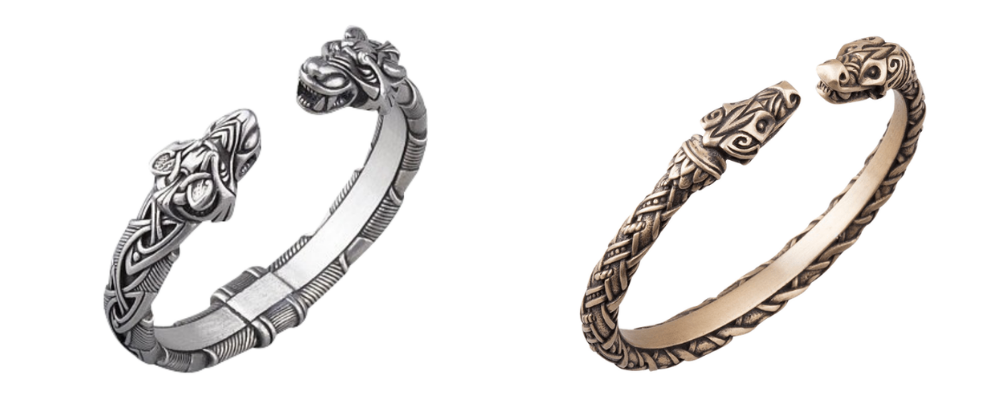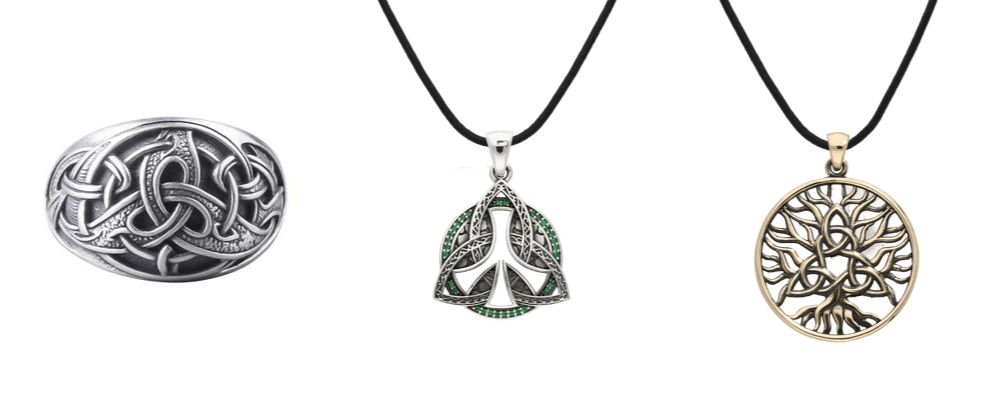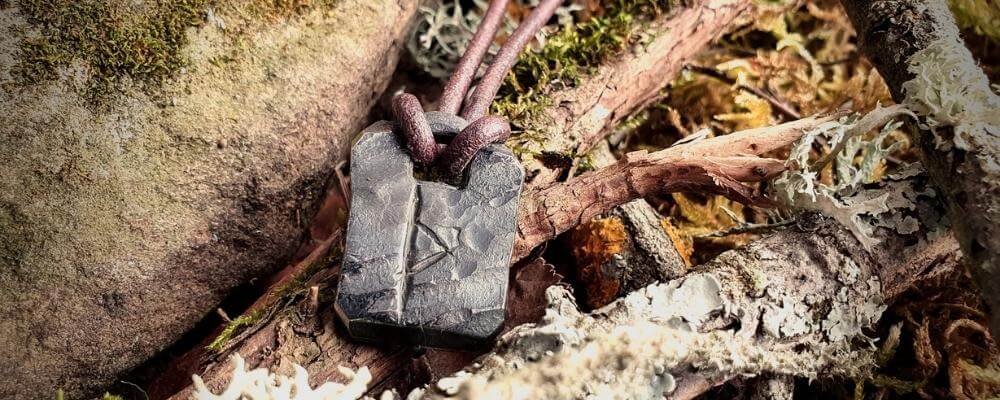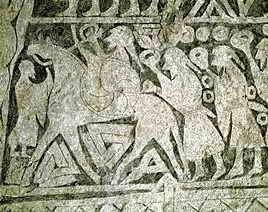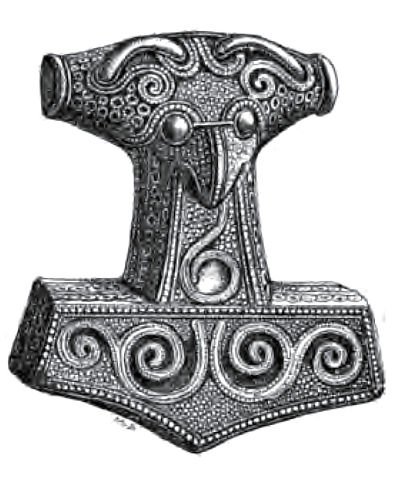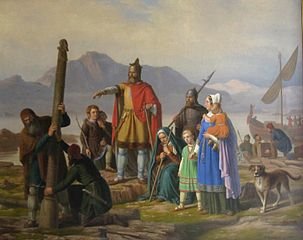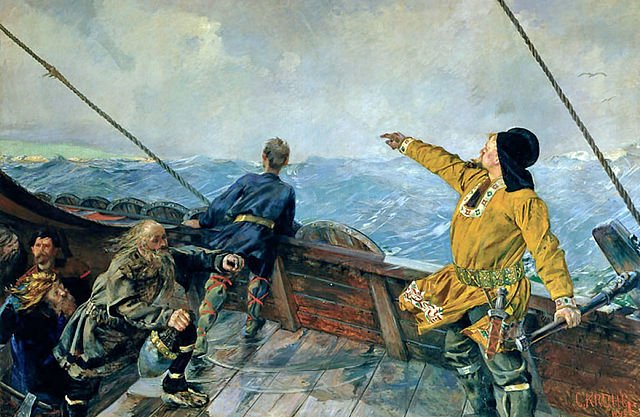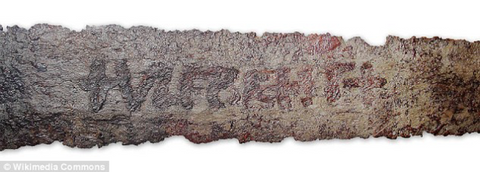Viking History: Who Are The Various Types Of Vikings?

The term Vikings is typically utilized as a generic term to refer to a varied and large group of individuals, and it is not
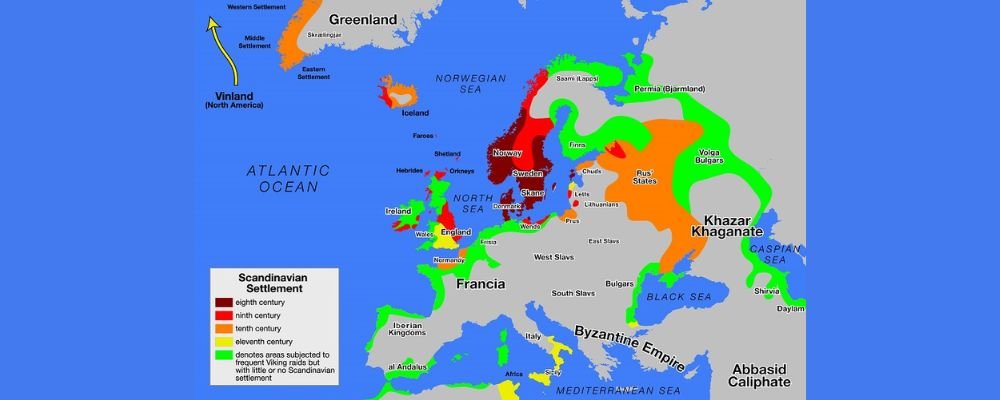
always clear who exactly those individuals are.
We are really guilty of doing this! Today, let’s take a closer look at who exactly we are referring to when we use the term Vikings and the different groups that exist below that umbrella term. What do the various groups share, and what separates them? Who Are The Vikings? We utilize the term Vikings to refer to peoples descended from Germanic people, encountered by the Romans in Germany as early as the 1 st century advertisement, who by the 7 th century had established themselves in parts of Scandinavia, specifically Norway, Sweden, and Denmark. While the Vikings were not a single consistent group, they had lots of things in common. Specifically, they spoke versions of Old Norse and wrote utilizing runes based on earlier Proto-Germanic language. They likewise followed a comparable faith, today known as the Norse religion, which
fixates the gods Odin, Thor, and Freyja. They are also regularly seafaring people. Notably, the Finns aren’t thought about Vikings, although they would have connected with their Viking next-door neighbors and there was no doubt substantial intermarrying and cultural exchange between the Finns and the Vikings. This is due to the fact that the Finns moved into the location from the east, rather than Germany, they do not speak a variation
of Old Norse, and they have different spiritual traditions.
Various Types
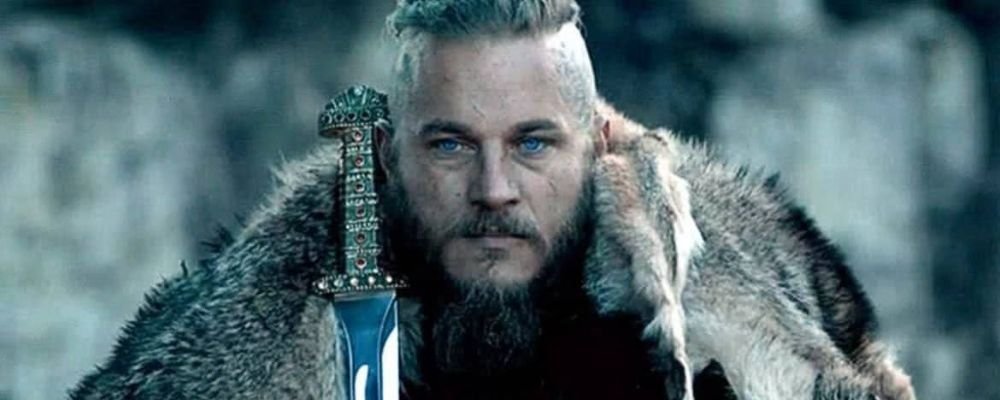
of Vikings While it is constantly very difficult to draw tidy lines between surrounding individuals, the Vikings can normally be divided into three groups: the Danes, the Norwegians, and the Swedes. Even these 3 groups aren’t consistent. They were smaller clan-based societies, however clearly, clans had a lot in common with their next-door neighbors, and they would battle, form alliances, marry, etc. The ideas of the Danish, Norwegian, and Swedish countries only emerged in around the 10 th century when powerful kings such as Harald Bluetooth handled to bring other leaders under their control.
Also, Viking leaders did not limit themselves by approximate borders. The famous Ragnar Lothbrok was obviously king of both Denmark and Sweden. The empire of the Danish king Cnut the Great covered Denmark, Sweden, and England. Nonetheless, it is still useful to speak about the Vikings in terms of these 3 groups.
Danish Vikings The Danes are the most well-known Vikings since they occur to be the ones that we know the most about. Since they were the most politically arranged and present in European politics, this is most likely. And given that the Vikings have not left any of their own modern histories, we have to rely on recommendations to them in the records of others. The Danes robbed to the west, particularly France and England, and set up settlements in those areas. They settled northern France and practically took control of Normandy.
This is why the Norman Willian the Conqueror is frequently called a Viking. They likewise developed themselves throughout England, but specifically around York and Northumbria. Their existence was so strong there that large swathes of the nation were governed not by English law, but by Danelaw. Their close relations with European Christians is most likely why the Danish Vikings were the first to transform to Christianity. The most famous Danish Vikings are the legendary Ragnar Lothbrok and his kids including Bjorn Ironside and Ivar the Boneless. While they were likewise kings in Sweden, they are of Danish origin. Other popular Danes include King Gorm, considered to have actually joined Denmark as a single nation in the 10 th century, his boy Harald Bluetooth who led the conversion to Christianity, Sweyn Forkbeard, who was king of England for a brief period, and his kid Cnut the Great, who ruled over an empire that
consisted of Denmark, Sweden, and England. You can read our full short article on the Danish Vikings here.
Norwegian Vikings
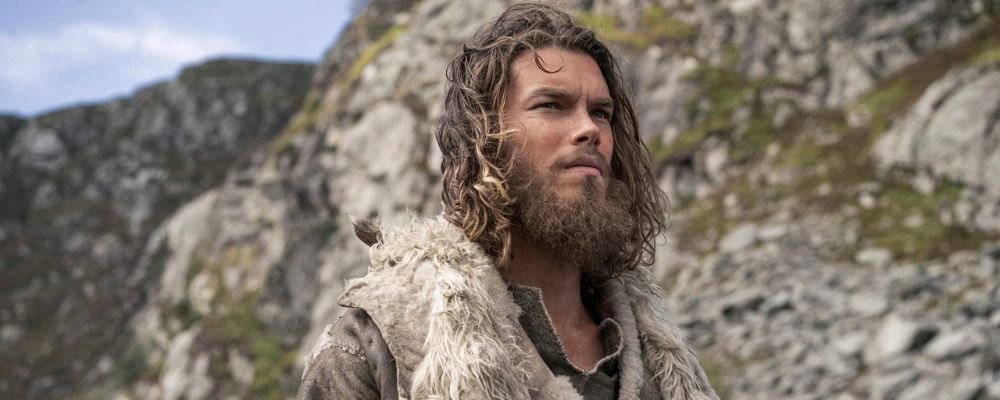
Among the attributes of Norwegian Vikings is that they are the ones who frequently brought axes into battle, while other Vikings were most likely to eliminate with swords or spears.
They are likewise the explorers of the Viking world. While they certainly conquered and pillaged, and had a strong existence in Ireland and Brittany, they are best known for discovering and settling virgin territory.
Iceland was settled by the Norwegians in the second half of the 9th century, and the Icelandic Vikings are most carefully associated to the Norwegian Vikings. They likewise vacated to Greenland in the 10th century. They also established themselves on various Nordic islands including the Shetland, Orkney, and Faroe Islands.
It was likewise the Norwegian-Icelandic Vikings that cruised to the New World at the start of the 11th century, landing in Newfoundland in Canada and briefly settling and trading there.
The most well-known Norwegian Vikings include Erik the Red, who settled Greenland, his boy Leif Erikson, who is typically credited with being the first Viking in the New World, and Harald Finehair, a militaristic king of Norway who also attacked England in 1066, playing an important role in the success of William the Conqueror.
Swedish Vikings
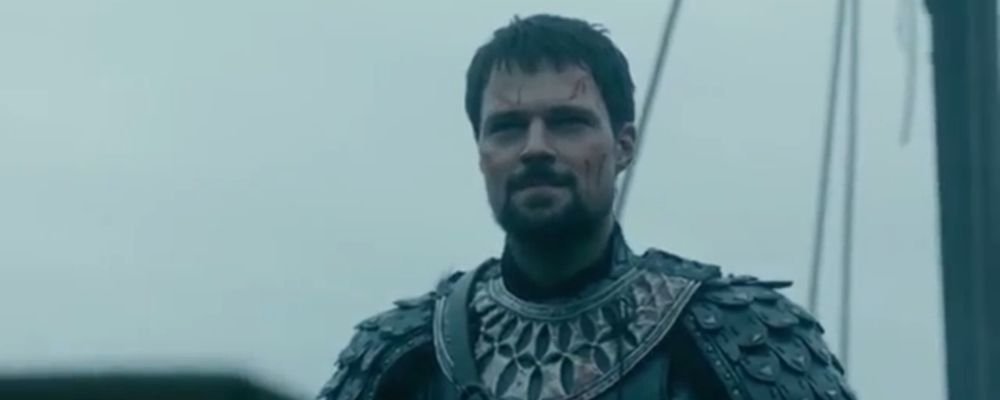
While Swedish Vikings were likewise outstanding warriors, they were more thinking about trade and alliances than raiding. They likewise focussed their attention east towards the Slavic area and Russia.
The Swedes are frequently referred to as the Rus and they developed the Viking settlement around Kiev that would happen known as the Kievan Rus community and began to work for the Byzantine empire as elite warriors which ended up being referred to as the Varangian Guard. Varangian was another common name of the Swedish Vikings.
They traded and pillaged down the Volga and Dnieper Rivers and established trade paths to the Middle East and the Black Sea. They are known to have actually intermarried and culturally intermixed with the Slavic individuals, especially those of Poland.
It deserves noting that some of the most unusual stories that we find out about the Vikings relate specifically to the Swedish Vikings. They are the group described as consisting of human sacrifices in their funerary rights and being covered in blue tattoos.
The most well-known Swedish Vikings include Oleg of Novgorod, who established Kiev as the capital of the Kievan Rus in the 9th century, Erik the Victorious, the very first historically verifiable Swedish King from the 10th century, and Ingvar Vittfarne, who led expeditions to the Caspian Sea in the 11th century. Different runestones in Sweden celebrate his journeys.
The Verdict
While we acknowledge that this is an extremely streamlined and brief summary, it offers a good structure for understanding who the Vikings were.
But what do you think? Do these departments line up with your vision of the Vikings, and how essential do you believe that these departments were at the time?
The post Who Are The Different Kinds Of Vikings? appeared first on Norse and Viking Mythology.
Significantly, the Finns aren’t thought about Vikings, even though they would have connected with their Viking next-door neighbors and there was no doubt considerable intermarrying and cultural exchange between the Finns and the Vikings. Who Are The Vikings? The Danes are the most famous Vikings due to the fact that they take place to be the ones that we know the most about. While Swedish Vikings were also impressive warriors, they were more interested in trade and alliances than raiding. However what do you think?
Viking History: What is a Viking Berserker Warrior?

All Viking warriors were known by their neighbors to be strong, ferocious, and bloodthirsty. But amongst the Vikings themselves, there was an elite group of warriors known as the Berserkers. They were believed to eliminate with the ferocity of wild animals and to be unsusceptible to steel and fire. However did these warriors really exist, or were they just a myth?< img width="1000"height="400"src="https://everythingviking.com/wp-content/uploads/2022/12/viking-history-what-is-a-viking-berserker-warrior.jpg"alt="Viking Berserker Warrior"> What is a Berserker? According to legend, Berserker warriors were a spiritual order who went through rituals to communicate the spirit of wild animals prior to entering into battle. The animal most carefully connected with the Berserkers is the bear. Berserker implies” bear coat “. However there were likewise Ulfhednar,”wolf coats”, and Jofurr, “boar coats”. What is necessary is that these are wild animals belonging to the region and known to combat ferociously. The warriors became part of a kind of religious order in which they discovered routines to communicate
the spirit of the animal before entering into battle to embrace its relentless spirit. The men would then go into battle in a frenzy, showing excellent strength and courage, however likewise lose their senses to
a degree. They are typically described as doing things such as gnawing on their own shields to manage their bloodlust while waiting on the battle cry. They were thought about all but untouchable while fighting in this state. It was thought that they might not be hurt by steel or fire while in their frenzy. Notably, they also went into battle naked or using furs rather than armor. This might have alarmed their
opponents as it reveals a severe level of valiancy. After the craze died down, which could last hours or days, they were in a weakened state and would need to renew themselves. That they appear to have been part of an unique cult is reinforced by stories of them observing unique rules. One Berserker had to delay a single combat challenge to observe ritual days around Yule. When Berserkers passed away, they were laid out on the skin of their animals during their funerary proceedings. They are in some cases described as Odin’s special warriors, and it would make sense if their cult was concentrated on the god of war. The Valkyries, the magnificent shieldmaidens that help Odin take the bravest warriors to Ragnarok, are in some cases represented as their spirit better halves. While many readers analyze stories of the Berserkers as the warriors taking on the ferocity of the animals, there are some accounts that recommend that they changed into the animal itself, literally
becoming a bear or a wolf. This is referred to as hamask,”
to alter type”. Attestations of Berserker Warriors Berserker warriors are discussed relatively often in the surviving sagas, and there is also excellent evidence that they have been around since early German times.
Trajan’s column in Dacia, which was built in the first century AD, reveals German warriors using the skins and heads of both bears and wolves. German guards and standards captured by the Romans likewise show warriors using wolf skins.
A 5th century golden horn from Mogeltonder reveals naked warriors in horned headdresses, which is the manner in which Berserkers frequently appear to be represented.

In the late 9 th century, Thorbjorn Hornklofi explains King Harald Fairhair of Norway as having a guard of wolf warriors that wore pelts instead of mail when they went into battle.
The saga of Hrolf Kraki declares that Bodvar Bjarki literally shapeshifted into a bear to combat at the front of King Hrolf Kraki’s army. The following is a translation of his description of the warriors.
I’ll Since the berserks, you tasters of blood,
Those intrepid heroes, how are they dealt with,
Those who wade out into fight?
Wolf-skinned they are called. In fight
They bear bloody shields.
Red with blood are their spears when they concern battle.
They form a closed group.
The prince in his wisdom puts trust in such males
Who hack through enemy guards.
The “cups of blood” are not the warriors, but rather the ravens of Odin that circle the battleground, strengthening the connection between the Berserkers and the All-Father.
It is the Svarfaela Saga that informs the story of a Berserker postponing a single battle up until three days after Yule due to his personal spiritual observances.
According to Egil’s Sage, a group of Vikings that went to King Harald to inform him about the death of among his relative were strong and had an “astonishing” presence that made them look more like giants than people. Numerous interpreters believe that these need to have been Berserkers.
According to the Byzantine Emperor Constantine VII in the 10th century, some of his Varangian guard, elite Viking warriors in his service, participated in something referred to as the Gothic dance wearing animal skins and masks. He might be explaining a Berserker ritual.
In the 13th century, Snorri Sturluson also explained “Berserkergang”hen.
Odin’s guys hurried forwards without armor, were as mad as wolves or pets, however their guards, and were strong as bears or wild oxen, and eliminated people at a blog, however neither fire nor iron informed upon them.
Some bronze-cast dies found at Torslunda in Oland in Sweden seem to reference the Berserker routines. One shows a dancing guy using a horned headdress and another man carrying a spear and using a wolf’s skin. This may represent a routine of communicating the wolf.

However were the Berserker’s Genuine? The common mention of the Berserkers in the surviving sources recommends that the legend was based upon something. Even if the Vikings did not have warriors that could shapeshift into bears or wolves, or that were immune to fire and steel, they may well have actually had warriors that worked themselves into a fantastic frenzy to be stronger and more bold in battle.
Some scholars recommend that the routines that they participated in to achieve this state may have involved the consumption of drugs, such as hallucinogenic mushrooms.
This theory has been lent support by the discovery of Henbane seeds (Hyoscyamus niger) in the tomb of a Viking warrior discovered in Denmark. Henbane is known to cause violent behavior, boost strength, and normally trigger an individual to lose control of themselves in a way not too dissimilar from that described of the Berserkers.
While there might be a lot of misconceptions around the idea of the Berserkers, they certainly appear to have existed in Viking times.
Berserkers in Vikings Valhalla
Making use of Viking history and legend, the History Channel has actually consisted of Berserkers in their Vikings: Valhalla series. They do appear to have to include them in the most unusual way. It is not the pagan Vikings who follow Berserker practices, however Jarl Kare and his men, who are looking to remove the old religion in Scandinavia.
This seems very unlikely. While other Viking warriors found a location for themselves within Christianizing Scandinavia, the Church did not support the use of drugs in fight. As Viking neighborhoods began to convert to Christianity Berserkers were outlawed, beginning in Norway in 1015. The practice is likewise clearly banned in the middle ages Icelandic law code referred to as the Gragas.
Considering the close connection between the Berserkers and Odin, this part of the Vikings: Valhalla series seems really out of step with historic possibilities.
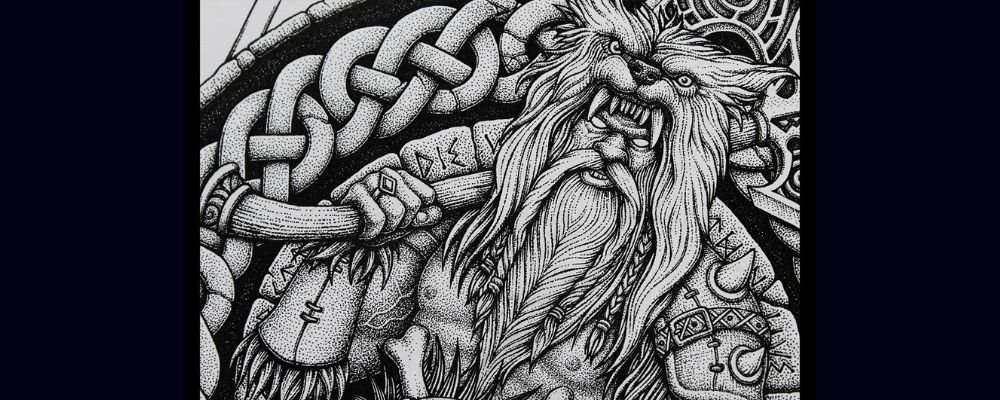
What does it imply to freak out today? The idea of going berserk still exists among contemporary Vikings, however it has actually taken on a brand-new meaning. Rather than losing control and battling with the ferocity of a bear, it describes the capability to transform yourself by discovering inner strength that does not constantly feel available.
Modern specialists of Asatru will communicate the spirit of the bear or wolf to help them gain access to that strength in times of extreme difficulty.
But what do you think? Would you like to freak out?
The post What is a Viking Berserker Warrior? appeared first on Norse and Viking Mythology.
Even if the Vikings did not have warriors that could shapeshift into wolves or bears, or that were immune to fire and steel, they may well have actually had warriors that worked themselves into a terrific frenzy to be stronger and more daring in battle.< img width="1000"height="400"src="https://everythingviking.com/wp-content/uploads/2022/12/viking-history-what-is-a-viking-berserker-warrior.jpg"alt="Viking Berserker Warrior"> What is a Berserker? They were considered all but untouchable while battling in this state. What does it indicate to go Berserk today? The post What is a Viking Berserker Warrior?


Some scholars recommend that the routines that they participated in to achieve this state may have involved the consumption of drugs, such as hallucinogenic mushrooms.
This theory has been lent support by the discovery of Henbane seeds (Hyoscyamus niger) in the tomb of a Viking warrior discovered in Denmark. Henbane is known to cause violent behavior, boost strength, and normally trigger an individual to lose control of themselves in a way not too dissimilar from that described of the Berserkers.
While there might be a lot of misconceptions around the idea of the Berserkers, they certainly appear to have existed in Viking times.
Berserkers in Vikings Valhalla
Making use of Viking history and legend, the History Channel has actually consisted of Berserkers in their Vikings: Valhalla series. They do appear to have to include them in the most unusual way. It is not the pagan Vikings who follow Berserker practices, however Jarl Kare and his men, who are looking to remove the old religion in Scandinavia.
This seems very unlikely. While other Viking warriors found a location for themselves within Christianizing Scandinavia, the Church did not support the use of drugs in fight. As Viking neighborhoods began to convert to Christianity Berserkers were outlawed, beginning in Norway in 1015. The practice is likewise clearly banned in the middle ages Icelandic law code referred to as the Gragas.
Considering the close connection between the Berserkers and Odin, this part of the Vikings: Valhalla series seems really out of step with historic possibilities.

What does it imply to freak out today? The idea of going berserk still exists among contemporary Vikings, however it has actually taken on a brand-new meaning. Rather than losing control and battling with the ferocity of a bear, it describes the capability to transform yourself by discovering inner strength that does not constantly feel available.
Modern specialists of Asatru will communicate the spirit of the bear or wolf to help them gain access to that strength in times of extreme difficulty.
But what do you think? Would you like to freak out?
The post What is a Viking Berserker Warrior? appeared first on Norse and Viking Mythology.
Even if the Vikings did not have warriors that could shapeshift into wolves or bears, or that were immune to fire and steel, they may well have actually had warriors that worked themselves into a terrific frenzy to be stronger and more daring in battle.< img width="1000"height="400"src="https://everythingviking.com/wp-content/uploads/2022/12/viking-history-what-is-a-viking-berserker-warrior.jpg"alt="Viking Berserker Warrior"> What is a Berserker? They were considered all but untouchable while battling in this state. What does it indicate to go Berserk today? The post What is a Viking Berserker Warrior?
Viking History: The Vikings in Spain
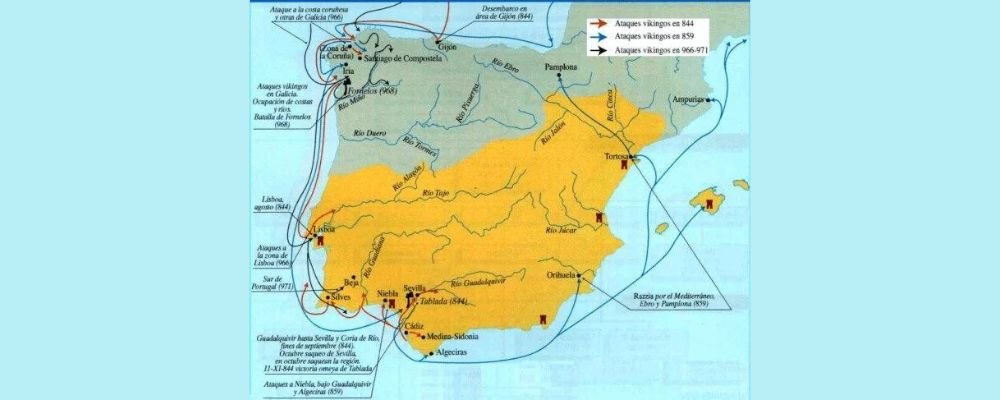
The Vikings are infamous for raiding and intimidating their neighbors in Britain and France and are understood to have actually been active in the east around the Balkans and as far as Constantinople. We hear very little about the Vikings in Spain and Portugal. Did the Vikings leave these neighboring lands untouched? The Vikings were active
on the Iberian Peninsula in between the 9 th and the 11 th centuries. This history is mainly obscured because this corresponds with the increase of Muslim rule, which had a much more long lasting and widespread effect of the development of the area. This indicates that reference of the Vikings is much less prevalent in the making it through written sources, and they likewise do not appear to have made any settlements. However the Vikings did leave their mark on Spain. Let’s take a look at what we do learn about the Norsemen’s activities on the Iberian Peninsula.< img width =" 1000"height="400"src= "https://everythingviking.com/wp-content/uploads/2022/12/viking-history-the-vikings-in-spain.jpg" alt="Vikings in Spain"> Norsemen in Iberia Several contemporary sources
describe the Vikings in Spain, but not as” Vikings “. Latin sources call them Normanni, which indicates Norsemen, while Arabic sources describe them as majus ¸ which suggests”heathen adorers of numerous gods”. This term was used to describe many pagan individuals, so it is not constantly clear that they are referring to the Vikings.< img width ="1000"height="
400″src=”https://everythingviking.com/wp-content/uploads/2022/12/viking-history-the-vikings-in-spain-1.jpg” alt =”Norsemen in Iberia”> 9 th Century The Vikings seem to have very first appeared in Spain in the 9 th century. Their very first significant raid is dated to August 844, when they cruised to Galicia with a fleet of ships with red sails after sacking Bordeaux in France. The troop or warriors robbed and plundered a lot of the villages along the coast of Galicia till they were lastly stopped in their descent by the army of king Ramilo I of Asturias. A regional legend suggests a more divine source for the salvation of the Spaniards. They recommend that when the Vikings reached the mouth of the river Masma, the regional Bishop Gonzalo wished protection, and not long after, a storm sank a good portion of the Biking fleet. This loss did not stop the group of raiders who are taped as raiding around Lisbon in September on their way to Seville. The recorded this city in October, however not the central citadel, which remained under Muslim control. Instead, their threatened and intimidated the surrounding locals attempting to force them to turn over the stronghold. Eventually the Emir of Corduba, Abd al-Rahman II, sent troops that burned 30 of the Viking longships utilizing “Greek fire”, which ignited in the water. More than 1,000 Vikings were killed, and some converted to Islam to be spared. Seville and the surrounding area recovered, however reconstructing took many years. Viking activity here might have set off the placement of a shipyard in Seville, which cause the development of a Spanish fleet. A single band of adventurers apparently went back to Spain in 859-862 and robbed along the coast up until they passed through Gibraltar and robbed the small Moroccan state of Nekor, where they apparently beat a Moorish army. This story may be more truth than legend, as some claim that these raiders were none other than Hastein and Bjorn Ironside.
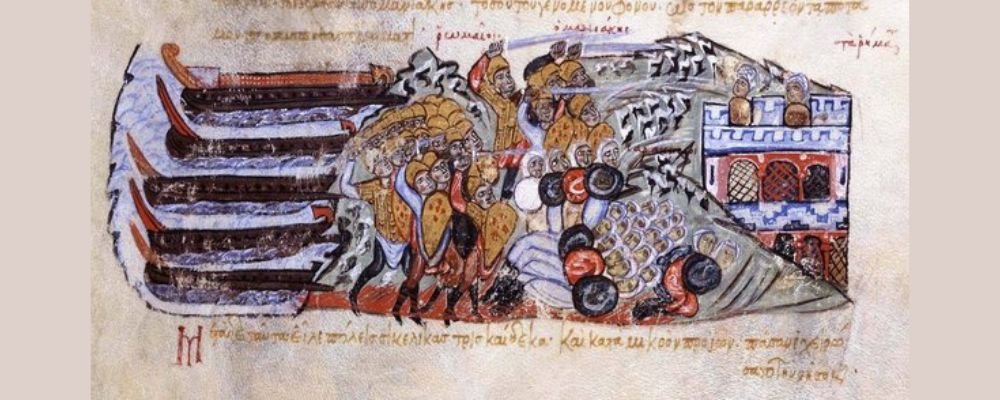
This period of activity appears to have ended when the Vikings of Denmark, who were most likely also the source of the raiders, sent an Embassy to Abd al-Rahman II. He responded by sending his favorite court poet, The Gazelle, to the court of King Harken in Denmark. 10 th Century While minor raids no doubt continued throughout the stepping in century, the next major duration of Viking activity in Spain seems to have actually remained in the second half of the 10th century. Two accounts of the death of the well-known Viking Erik Bloodaxe suggest that he passed away in Spain, though numerous others state that he passed away in England. While he probably didn’t pass away in Spain, that it was recommended as a possible story recommends that the Vikings were active in the area.
Numerous sources for the 960s and 970s describe Viking raids on abbeys and towns around Galicia, Al-Andalus, and Lisbon. One source recommends another attack on Lisbon in 966 with 28 ships.
In 968, a group of 100 ships led by the Viking Gunderer tried to raid the area of Iria and made difficulty in the location for 3 years prior to being beat by the forces of an unidentified Gonzales Sanchez. In the aftermath, Bishop Sisnando fortified the city of Santiago de Compostela.
The Vikings might have tried to establish a firmer foothold in the Iberian Peninsula at this time, as they did in Britain and France, as one charter from 996 utilizes a Norse fortress as a regional landmark.
A series of early middle ages rock castles built on hills and mountains of the Galician coast offering broad vision out over the ocean may have been integrated in response to the continuing Norse raids.

11 th Century The Vikings were still making their existence known in Iberia in the 11 th century, with recognized Viking raids tape-recorded in the Chronicon Lusitanium for 1008 and 1016.
However at this stage, they appear to have been “passing through” instead of making Spain a target. The Heimskingla suggests that Olaf II of Norway robbed the coast on his way to the Holy Land in 2015.
Another source suggests that a few years later, a Viking team abducted a female named Meitilli and her child for ransom. They got a cloak, a sword, a short, three pieces of linen, a cow, and some salt. This is the ransom of passing sailors instead of a raiding force.
A charter of King Alonso V of Leon in 1024 merged the bishopric of Tui into that of Santiago due to the fact that the bishop and other senior authorities of Tui were taken by the Vikings as servants.
However while Viking raids might have been less organized in this duration, they were still bothersome enough that in 1055, Bishop Cresconius of Iria exempted the people from resting on Sundays in the case of a Saracen or Viking attack.
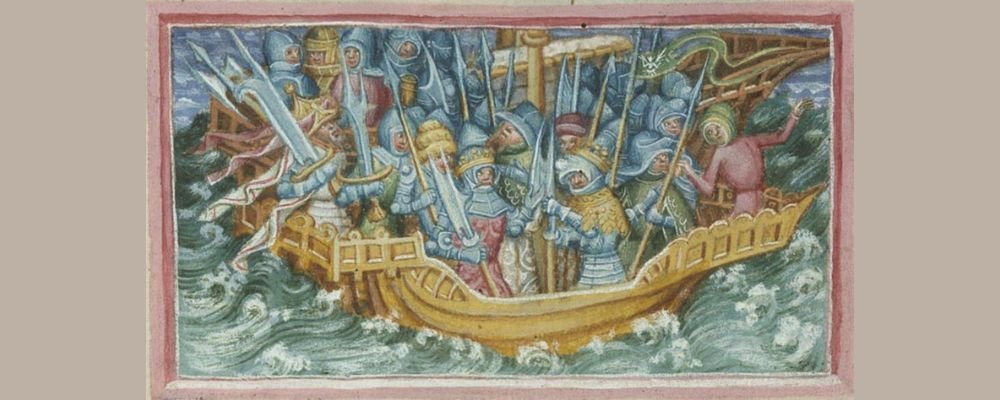
Viking Tradition As can be seen, the history of the Vikings in Spain is patchy, pieced together by mentions in charters and comparable documents. This is due to the fact that the histories composed in this duration concentrate on the Saracen dominance of Spain.
There is an increasing interest in the Viking influence on the nation. While they may not have established settlements and infiltrated the gentility as they carried out in England and France, the Vikings definitely seem to have had an effect. Numerous strongholds appear to have been an action to Viking raids, and the Spanish fleet of the age, which would later check out the world, seems to have begun as a reaction to Viking raiders.
Locals also mark the Spanish resistance to the Vikings on the very first Sunday of August, when volunteers from the community gown up and cruise a replica 11th-century Viking longboat down the river Ulla to the town of Catoira. There they meet townsfolk, who effectively fend them off. The affair ends with both sides covering themselves in wine to represent blood and delighting in local Galician delicacies.
This is the kind of celebration of which the Vikings would have authorized.
Find pieces celebrating the Viking longships in the VKNG Collection.
The post The Vikings in Spain appeared first on Norse and Viking Folklore.
A number of modern sources refer to the Vikings in Spain, but not as”Vikings”. Residents also mark the Spanish resistance to the Vikings on the very first Sunday of August, when volunteers from the community gown up and cruise a reproduction 11th-century Viking longboat down the river Ulla to the town of Catoira.< img decoding=" async"loading="lazy"width="1000"height ="400"src ="https://everythingviking.com/wp-content/uploads/2022/12/viking-history-the-vikings-in-spain-5.jpg "alt ="Viking
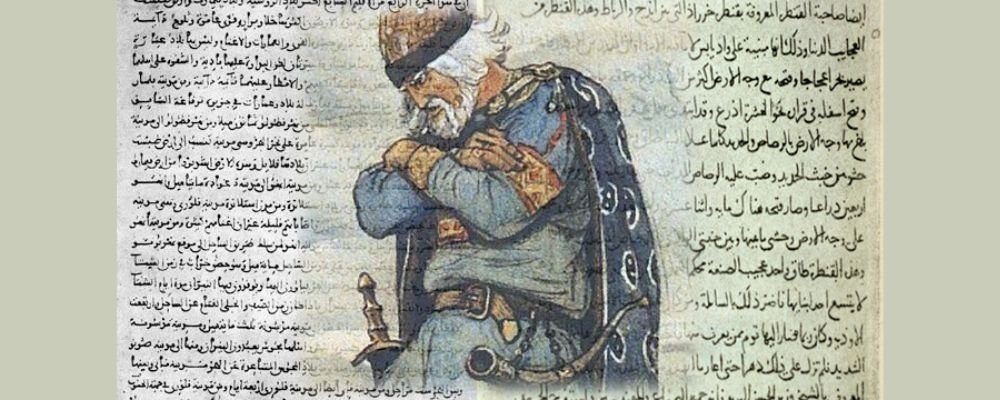
longships rings”class=”wp-image-5004″srcset=” https://everythingviking.com/wp-content/uploads/2022/12/viking-history-the-vikings-in-spain-5.jpg 1000w, https://everythingviking.com/wp-content/uploads/2022/12/viking-history-the-vikings-in-spain-11.jpg 300w, https://blog.vkngjewelry.com/wp-content/uploads/2022/09/drakkar-Skidbaldnir-jewelry-bracelet-and-pendant-vkngjewelry-768×307.jpg 768w”sizes=”( max-width: 1000px) 100vw, 1000px “data-jpibfi-post-excerpt data-jpibfi-post-url=”https://blog.vkngjewelry.com/en/vikings-in-spain/”data-jpibfi-post-title= “The Vikings in Spain “data-jpibfi-src=”https://everythingviking.com/wp-content/uploads/2022/12/viking-history-the-vikings-in-spain-5.jpg “>

However at this stage, they appear to have been “passing through” instead of making Spain a target. The Heimskingla suggests that Olaf II of Norway robbed the coast on his way to the Holy Land in 2015.
Another source suggests that a few years later, a Viking team abducted a female named Meitilli and her child for ransom. They got a cloak, a sword, a short, three pieces of linen, a cow, and some salt. This is the ransom of passing sailors instead of a raiding force.
A charter of King Alonso V of Leon in 1024 merged the bishopric of Tui into that of Santiago due to the fact that the bishop and other senior authorities of Tui were taken by the Vikings as servants.
However while Viking raids might have been less organized in this duration, they were still bothersome enough that in 1055, Bishop Cresconius of Iria exempted the people from resting on Sundays in the case of a Saracen or Viking attack.

Viking Tradition As can be seen, the history of the Vikings in Spain is patchy, pieced together by mentions in charters and comparable documents. This is due to the fact that the histories composed in this duration concentrate on the Saracen dominance of Spain.
There is an increasing interest in the Viking influence on the nation. While they may not have established settlements and infiltrated the gentility as they carried out in England and France, the Vikings definitely seem to have had an effect. Numerous strongholds appear to have been an action to Viking raids, and the Spanish fleet of the age, which would later check out the world, seems to have begun as a reaction to Viking raiders.
Locals also mark the Spanish resistance to the Vikings on the very first Sunday of August, when volunteers from the community gown up and cruise a replica 11th-century Viking longboat down the river Ulla to the town of Catoira. There they meet townsfolk, who effectively fend them off. The affair ends with both sides covering themselves in wine to represent blood and delighting in local Galician delicacies.
This is the kind of celebration of which the Vikings would have authorized.
Find pieces celebrating the Viking longships in the VKNG Collection.
The post The Vikings in Spain appeared first on Norse and Viking Folklore.
A number of modern sources refer to the Vikings in Spain, but not as”Vikings”. Residents also mark the Spanish resistance to the Vikings on the very first Sunday of August, when volunteers from the community gown up and cruise a reproduction 11th-century Viking longboat down the river Ulla to the town of Catoira.< img decoding=" async"loading="lazy"width="1000"height ="400"src ="https://everythingviking.com/wp-content/uploads/2022/12/viking-history-the-vikings-in-spain-5.jpg "alt ="Viking

longships rings”class=”wp-image-5004″srcset=” https://everythingviking.com/wp-content/uploads/2022/12/viking-history-the-vikings-in-spain-5.jpg 1000w, https://everythingviking.com/wp-content/uploads/2022/12/viking-history-the-vikings-in-spain-11.jpg 300w, https://blog.vkngjewelry.com/wp-content/uploads/2022/09/drakkar-Skidbaldnir-jewelry-bracelet-and-pendant-vkngjewelry-768×307.jpg 768w”sizes=”( max-width: 1000px) 100vw, 1000px “data-jpibfi-post-excerpt data-jpibfi-post-url=”https://blog.vkngjewelry.com/en/vikings-in-spain/”data-jpibfi-post-title= “The Vikings in Spain “data-jpibfi-src=”https://everythingviking.com/wp-content/uploads/2022/12/viking-history-the-vikings-in-spain-5.jpg “>

Viking History: Did the Vikings Celebrate Halloween?

Did the Vikings commemorate Halloween? The Norse warriors(and their kids)definitely did not go trick or dealing with on the 31 st of October
, but this was still an essential day in the Norse calendar. Completion of October marks the end of the harvest season and the beginning of winter, which implies long, dark days, specifically in northern nations such as Scandinavia. Numerous cultures mark this date with special rituals, consisting of the Vikings. In the Norse world, it was called Alfablot, or the celebration of the fairies. Who are the Elves? The word”blot “is the name for essential spiritual celebrations in the Viking world, while the word “Alf”refers to the elves of Norse mythology. You will typically see the different races broken into discrete groups when you check out summaries of Norse mythology. There are the Aesir gods, the giants, the light fairies, and the dark elves, likewise referred to as dwarves. The reality is that the lines between these different groups were far from clear. The Aesir gods and the giants intermarried routinely. Odin himself was half-giant given that his mother was the giantess Bestla. He had Thor with the giantess Jord, making him more giant than god. In addition to the Aesir gods, there were the Vanir gods, a parallel race of gods that consisted of some of the most crucial Norse divine beings, consisting of the goddess of love, Freyja, and the god of fertility, Freyr. But the lines between the Vanir and the light elves were likewise blurred, with both being thought about almost like nature spirits, and Freyr was the ruler of Alfheim, the land of the elves
. And when we refer to the Alfar, it is not entirely clear whether the referral is to the Ljosalfar, the light fairies that seem to have resembled Tolkien’s fairies, or the Dokkalfar, which were more like Tolkien’s dwarves and the master artisans of Norse mythology. The gods and elves were often described side by side as”Aesir ok Alfar “, which implies Aesir and elves. More than this, the fairies were likewise in some cases conflated with the honored dead and are described as living around burial mounds. Some essential people were described as fairies after they passed away. King Olaf of Geirstad ended up being known as Olaf Geirstad-Alf when he was honored as a forefather. And the lines between the gods and the honored dead were likewise unclear. Fallen warriors were taken to reside in Asgard, in the hall of Valhalla. Some of the entities thought about among the gods, such as Bragi the Bard of Asgard, may have when been
guys. What is the point of saying all this? Just to stress that it is not constantly beneficial to attempt and draw clear lines between the various supernatural beings in Norse mythology or create tidy meanings and typologies.

What Happened During Alfablot? Alfablot seems to have actually been a personal festival performed inside the home, probably led by the leading woman of the family. The ritual probably involved honoring the dead ancestors of the specific family, and outsiders were not welcome.
This is exposed in the Skaldic poem Austrfararvisur by Sigvatr Thordarson. An Icelandic Christian, he explains himself and a small celebration taking a trip for diplomatic reasons. But for a couple of nights around the end of October, they have a hard time to find the hospitality that they are accustomed to receiving, with homestead after homestead declining to open their doors.
The locals state that they can not open their doors because their spaces have been sanctified for the duration and that to open their doors to strangers would invite the wrath of Odin.
What sort of sacrifices might have been performed to the elves at this time is indicated by an account in Kormaks Legend, which describes a routine to conjure up the aid of the elves in recovery a wound. They are told to go to the mound (presumably a burial mound) and make a blood sacrifice for the fairies to feast, and they will be healed.
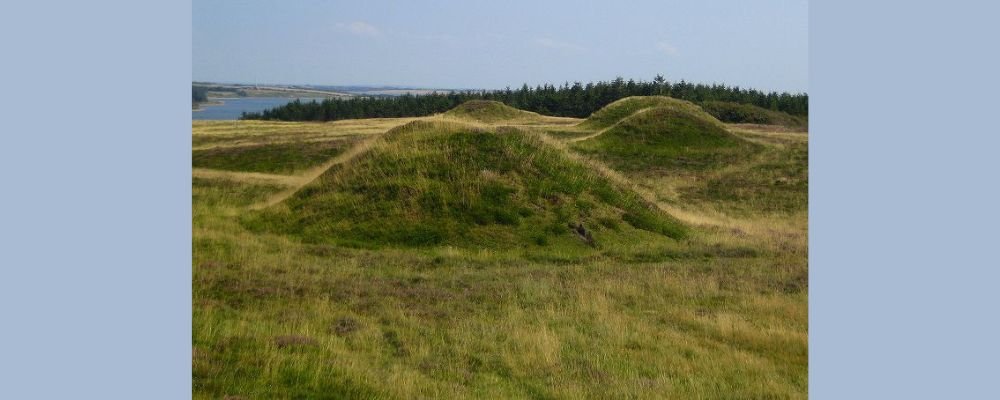
Day of the Dead Along with being a day to honor the dead, it may likewise have indicated the start of a season when the dead were thought about more likely to be”abroad”. While some dead discovered themselves in places such as Valhalla or Helheim, others were thought to occupy a world simply behind a veil. During the night, this veil was in some cases satisfactory.
In the Eddic poem Helgaknitha Hundingsbana II, the slain hero Helgi leaves Valhalla to visit his burial mound on one particular magical night. He has a physical body, which still bleeds from his fight injuries. His widow Sigrun encounters him there and he spends the night holding her in his arms prior to going back to Valhalla. Sigrun then returns to the burial mound every night searching for him. After a time, when he is no longer present, she dies of a damaged heart.
While this story has an unhappy ending, it is still the story of a good-hearted dead spirit pushing into the living world, but not all the dead were humane. Draugr or Aptrganga (after walkers) were harmful ghosts in Norse mythology, typically born from dead men who were evil in life.
These dead had monstrous functions consisting of blue skin and eyes so dreadful that they might freeze a man in fear. On top of this they have transcendent strength and can terrify neighboring neighborhoods. They are known to have actually done things such as killing animals, collapsing homes, and murdering shepherds and servants by breaking all of the bones in their bodies.
The Grettirs Legend, the antihero Grettir kills a Draugr early in his life and takes the short sword that the dead male was buried with as a reward. Years later on, he faces another Draugr called Glam. He eventually beheads him, but not before he places a terrible curse on the guy that leaves him permanently afraid of the dark.
The only way to eliminate these beings was to behead them, and after that bury them with their heads listed below their hips. There are numerous Viking age burials that show this practice. Others reveal dead persons weighed down by rocks, probably to avoid them from increasing.
It is highly likely that the routines at the end of October were developed to honor the forefathers, and likewise appease them and avoid them from causing difficulty over the coming dark months when they would have more flexibility to attack the world of the living.
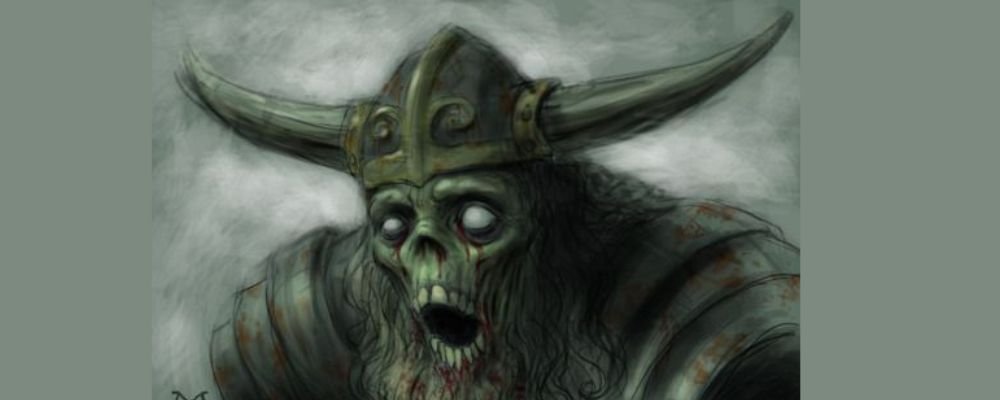
Viking Halloween What do you think of Norse rituals and practices surrounding the 31 st of October? Are any of them showed in modern-day Halloween practices?
The post Did the Vikings Commemorate Halloween? appeared first on Norse and Viking Folklore.
There are the Aesir gods, the giants, the light elves, and the dark elves, likewise understood as dwarves. And when we refer to the Alfar, it is not totally clear whether the referral is to the Ljosalfar, the light fairies that seem to have actually been like Tolkien’s elves, or the Dokkalfar, which were more like Tolkien’s dwarves and the master craftsmen of Norse mythology. There are the Aesir gods, the giants, the light fairies, and the dark fairies, likewise understood as dwarves. And when we refer to the Alfar, it is not entirely clear whether the referral is to the Ljosalfar, the light fairies that appear to have actually been like Tolkien’s elves, or the Dokkalfar, which were more like Tolkien’s dwarves and the master craftsmen of Norse mythology. The post Did the Vikings Commemorate Halloween?

In the Eddic poem Helgaknitha Hundingsbana II, the slain hero Helgi leaves Valhalla to visit his burial mound on one particular magical night. He has a physical body, which still bleeds from his fight injuries. His widow Sigrun encounters him there and he spends the night holding her in his arms prior to going back to Valhalla. Sigrun then returns to the burial mound every night searching for him. After a time, when he is no longer present, she dies of a damaged heart.
While this story has an unhappy ending, it is still the story of a good-hearted dead spirit pushing into the living world, but not all the dead were humane. Draugr or Aptrganga (after walkers) were harmful ghosts in Norse mythology, typically born from dead men who were evil in life.
These dead had monstrous functions consisting of blue skin and eyes so dreadful that they might freeze a man in fear. On top of this they have transcendent strength and can terrify neighboring neighborhoods. They are known to have actually done things such as killing animals, collapsing homes, and murdering shepherds and servants by breaking all of the bones in their bodies.
The Grettirs Legend, the antihero Grettir kills a Draugr early in his life and takes the short sword that the dead male was buried with as a reward. Years later on, he faces another Draugr called Glam. He eventually beheads him, but not before he places a terrible curse on the guy that leaves him permanently afraid of the dark.
The only way to eliminate these beings was to behead them, and after that bury them with their heads listed below their hips. There are numerous Viking age burials that show this practice. Others reveal dead persons weighed down by rocks, probably to avoid them from increasing.
It is highly likely that the routines at the end of October were developed to honor the forefathers, and likewise appease them and avoid them from causing difficulty over the coming dark months when they would have more flexibility to attack the world of the living.

Viking Halloween What do you think of Norse rituals and practices surrounding the 31 st of October? Are any of them showed in modern-day Halloween practices?
The post Did the Vikings Commemorate Halloween? appeared first on Norse and Viking Folklore.
There are the Aesir gods, the giants, the light elves, and the dark elves, likewise understood as dwarves. And when we refer to the Alfar, it is not totally clear whether the referral is to the Ljosalfar, the light fairies that seem to have actually been like Tolkien’s elves, or the Dokkalfar, which were more like Tolkien’s dwarves and the master craftsmen of Norse mythology. There are the Aesir gods, the giants, the light fairies, and the dark fairies, likewise understood as dwarves. And when we refer to the Alfar, it is not entirely clear whether the referral is to the Ljosalfar, the light fairies that appear to have actually been like Tolkien’s elves, or the Dokkalfar, which were more like Tolkien’s dwarves and the master craftsmen of Norse mythology. The post Did the Vikings Commemorate Halloween?
Viking History: Samhain: Pagan vs. Norse Halloween

You have actually most likely heard someplace that modern Heathens and fans of the old Norse ways celebrate Halloween as a crucial holiday however under the standard name of Samhain.
This is only partly real. Completion of the harvest system at the end of October and the start of November was definitely an important time for the Norse pagans. This is the time of year when the days begin to get shorter and colder.
The transition was marked by a festival known as Alfablot, which we discussed in our last post. This is not the same as Samhain, which is a traditional Gaelic celebration that falls on the exact same day. Many outsiders tend to place all contemporary Pagans, or Neopagans, in a single group and explain them as marking the Sabbats throughout the year on solstices, equinoxes, and modifications of season. This considerably oversimplifies Neopaganism, which is an umbrella term for
lots of different belief systems, including Norse Heathenry, Celtic Polytheism, and
Wicca, which is a contemporary belief system that draws on aspects of many older religious beliefs. So, to be clear, Halloween was an important celebration in the Viking calendar, known as the Alfablot. While it occurs on the same date, it is not the same as Samhain. So, what exactly is Samhain, and how does it differ from the Alfablot? Let’s take a look. Gaelic Festival of the Harvest Samhain was an important celebration day in Ireland, Scotland, and the Island of Man. It was held each year on 1 November, which indicated the festival started throughout the evening on 31 October since the Celtic day started at sunset. Celebrations were typically held for about a week around the particular celebration. While Samhain was finest connected with the Irish world, comparable
celebrations were performed around the very same season by other Celtic neighborhoods. In Wales, it was referred to as Calan Gaeal, in Cornwall as Kalan Gwav, and in Brittany as Kalan Goanv. As we have actually currently said, in the Viking world, the celebration that occurs around the very same time is called Alfablot, or the Elf Sacrifice. This celebration extended across numerous 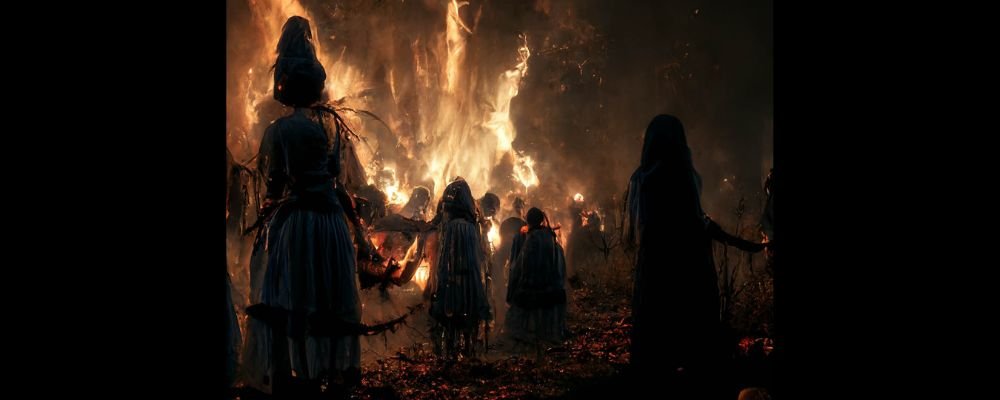
days from 28 October
till 2 November. Ancient Origins While all the written proof for Samhain comes from the Christian period, there is excellent proof that Samhain was an ancient festival among the Celts. A number of Irish Neolithic passage tombs are aligned with the rising sun on Samhain, recommending that the date was currently defined as important in ancient times. The Gaulish Coligny Calendar from the first-century BCE calendar calls this time of year Samoni.
The first literary evidence for Samhain comes from the 9th century when Ireland had currently been Christianized. This implies that the sources describe a mix of old Pagan customs and Christian overlays and affects. We have comparable concerns when understanding the customs around Alfablot, as all the making it through evidence originates from Christian authors observing altering practices.
There is some proof to suggest that the old Pagan celebration of Samhain was associated with the god Chrom Cruach, who appears to have actually been both a solar and a fertility deity. He is a wizened god concealed by mists who accepts “firstborn” sacrifices in exchange for good harvests.
A lot of sacrifices to Chrom Cruach were most likely the very first profits of the harvest, but there is some proof to recommend that he also got human sacrifices, generally of the first and most important in the neighborhood rather than the firstborn. It is suspected that several Irish bog burials represent the routine sacrifice of kings or other crucial persons, possibly interred around the time of Samhain.
Freyr was the principal god venerated throughout Alfablot, as he was thought about to have rule over the elves, the Alfar. He is likewise a fertility deity. This is only the very first of several considerable similarities between Samhain and Alfablot.
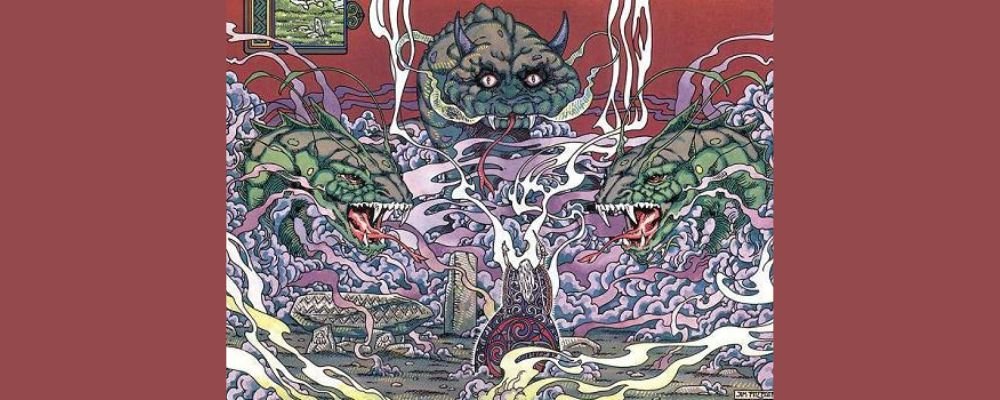
Samhain Gatherings By the 9 th century, Samhain was a time of festival and celebration. Communities would collect in big groups to eat, drink, and be merry. This indicated that Samhain likewise had political significance as it was a time to reaffirm bonds with allies and neighbors, and leaders could verify and pass guidelines and laws.
With the community gathered, mumming or guising, the root of trick-or-treating, was practiced. Individuals would dress up in masked outfits and go from place to position dancing and reciting verses in exchange for food. Traditions around hospitality and welcoming guests implied that rejecting these passersby food might bring misfortune and maybe likewise a trick from the disappointed gamers.
This is different from Alfablot, which was a personal family celebration led by the women of the home. The Vikings instead had their significant neighborhood gathering celebrations in August. According to the sources, the usual niceties of hospitality were neglected at this time, and passing travelers were turned away. Accepting a stranger into the family at this time might invite the wrath of Odin. This is most likely the most significant difference in between Samhain and Alfablot.
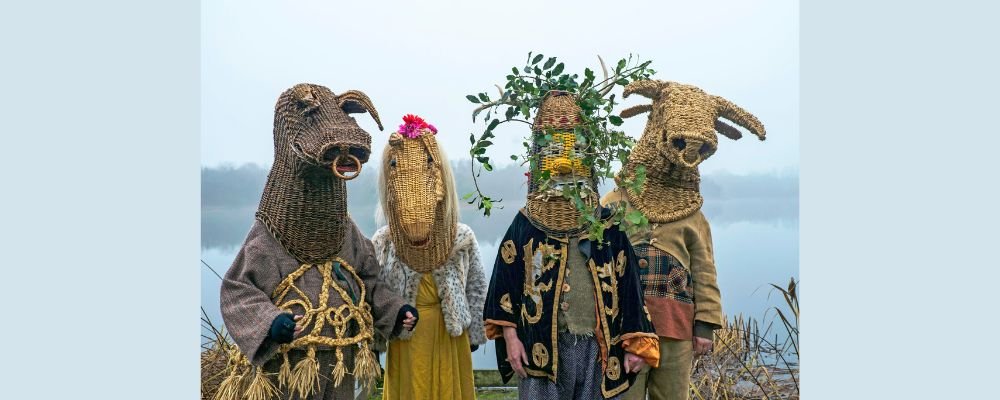
Day of the Dead Both Samhain and Alfablot were thought about days for honoring the ancestors and other spirits of the underworld. At Samhain, and also Beltane on May 1, the veil between the worlds was considered to be at its thinnest. Fairies, spirits, and ghosts can pass in between worlds and would have greater rule during the darker months.
In Irish literature, there are many stories of departed ancestors going back to see their houses at Samhain. More hazardous entities can also pass between the worlds, killing livestock and burning down homes if they so select. We see the very same themes appear in Norse literature, with spirits from Valhalla and other underworlds coming back to see the living.
Both Samhain and Alfablot routines were performed at burial mounds, which were thought about websites to the other world. Protective bonfires were constructed, and sacrifices were made to appease the spirits. In the Gaelic tradition, when individuals returned home, they would take a spark from the ritual bonfire to light their own hearth and lay out an extra plate for the honored forefathers.
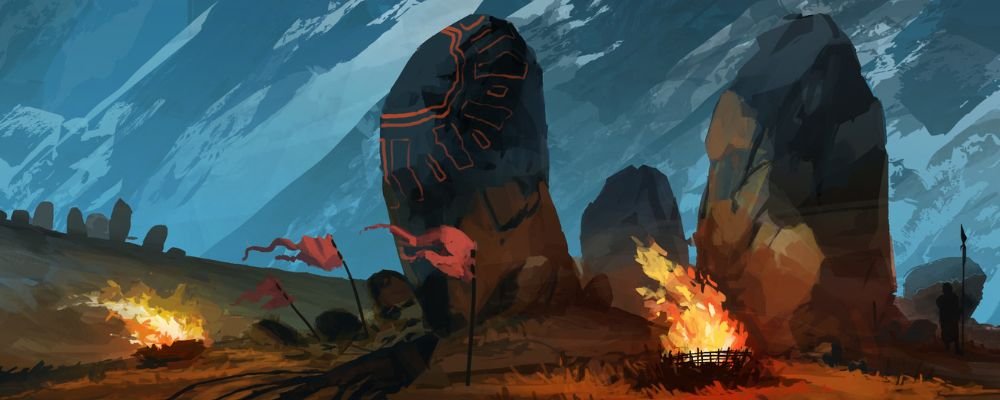
Prophecy The thin veil in between the world suggested that Samhain was also the ideal time for prophecy practices. Most of the surviving Celtic prophecy practices have actually become party tricks thanks to their adoption in modern Halloween celebrations.
Games such as bobbing for apples could reveal whether a person would wed or have children in the coming months. Individuals would also peel an apple in a single long hair while asking a question. They would then throw the peel over a shoulder, and the shape of the peel could supply a response. 2 hazelnuts were called for a private and their heart’s desire and after that placed on the fire to roast. If the hazelnuts leapt away from the fire, this was not an excellent indication for the match. If the 2 roasted quietly side by side, this was an excellent prophecy.
It is unclear whether divination was also a part of the Alfablot, but it would make sense that individuals may ask the learned ancestors for assistance. Volva, Viking witches, were considered seeresses and continued to be effective after death. Odin called a Volva back from the dead to recount to him the complete history of development and the Ragnarok prediction. Prophecy in the house at this time may have consisted of prophecy with rune stones. You can read our article on rune prophecy here.
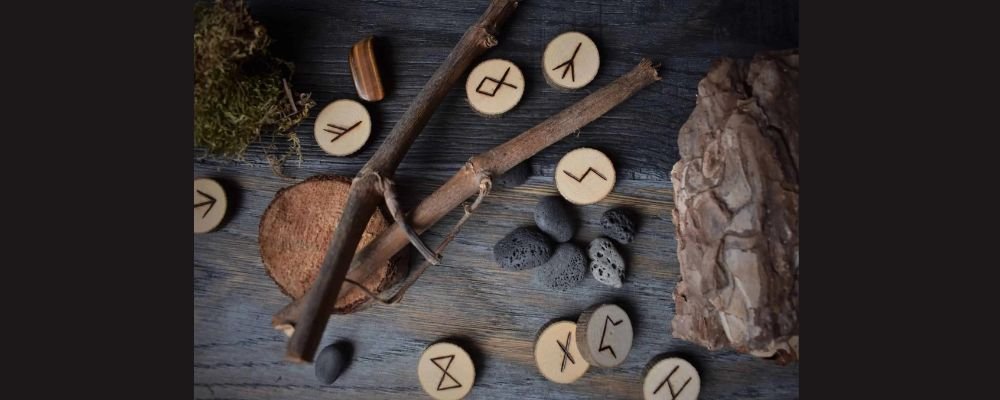
Samhain and Wicca While modern-day Heathens and followers of the old Norse ways will follow the Alfablot customizeds, lots of modern pagans and specialists of witchcraft identify with Samhain. There is some proof that Samhain has actually always been connected with witches. Among the principal sites in Ireland where Samhain bonfires were built and rituals carried out is referred to as the Hill of Ward, which is the burial mound for Tlachtga.
Tlachtga was the daughter of the Arch Druid Mug Ruith, and she traveled with her dad, discovering his secrets and ending up being an accomplished witch. Her burial mound appears to have been considered an especially potent portal to the underworld.
Which tradition will you be following on 31 October? Will you be honoring the Norse Elves (typically conflated with honored ancestors) or making sacrifices to Chrom Cruach? Or are you all about making your favorite outfit and trick-or-treating?
The Triquetra is an important symbol connected with magic and witchcraft in both the Viking and Celtic worlds. Store Triskelion pieces in the VKNG store.
The post Samhain: Pagan vs. Norse Halloween appeared initially on Norse and Viking Folklore.
While Samhain was finest associated with the Irish world, comparable celebrations were carried out around the very same time of year by other Celtic neighborhoods. While all the written evidence for Samhain comes from the Christian duration, there is good proof that Samhain was an ancient festival among the Celts. There is some proof to recommend that the old Pagan festival of Samhain was associated with the god Chrom Cruach, who seems to have actually been both a solar and a fertility deity. While all the written evidence for Samhain comes from the Christian period, there is excellent proof that Samhain was an ancient celebration among the Celts. There is some proof to recommend that the old Pagan festival of Samhain was associated with the god Chrom Cruach, who seems to have actually been both a solar and a fertility deity.

In Irish literature, there are many stories of departed ancestors going back to see their houses at Samhain. More hazardous entities can also pass between the worlds, killing livestock and burning down homes if they so select. We see the very same themes appear in Norse literature, with spirits from Valhalla and other underworlds coming back to see the living.
Both Samhain and Alfablot routines were performed at burial mounds, which were thought about websites to the other world. Protective bonfires were constructed, and sacrifices were made to appease the spirits. In the Gaelic tradition, when individuals returned home, they would take a spark from the ritual bonfire to light their own hearth and lay out an extra plate for the honored forefathers.

Prophecy The thin veil in between the world suggested that Samhain was also the ideal time for prophecy practices. Most of the surviving Celtic prophecy practices have actually become party tricks thanks to their adoption in modern Halloween celebrations.
Games such as bobbing for apples could reveal whether a person would wed or have children in the coming months. Individuals would also peel an apple in a single long hair while asking a question. They would then throw the peel over a shoulder, and the shape of the peel could supply a response. 2 hazelnuts were called for a private and their heart’s desire and after that placed on the fire to roast. If the hazelnuts leapt away from the fire, this was not an excellent indication for the match. If the 2 roasted quietly side by side, this was an excellent prophecy.
It is unclear whether divination was also a part of the Alfablot, but it would make sense that individuals may ask the learned ancestors for assistance. Volva, Viking witches, were considered seeresses and continued to be effective after death. Odin called a Volva back from the dead to recount to him the complete history of development and the Ragnarok prediction. Prophecy in the house at this time may have consisted of prophecy with rune stones. You can read our article on rune prophecy here.

Samhain and Wicca While modern-day Heathens and followers of the old Norse ways will follow the Alfablot customizeds, lots of modern pagans and specialists of witchcraft identify with Samhain. There is some proof that Samhain has actually always been connected with witches. Among the principal sites in Ireland where Samhain bonfires were built and rituals carried out is referred to as the Hill of Ward, which is the burial mound for Tlachtga.
Tlachtga was the daughter of the Arch Druid Mug Ruith, and she traveled with her dad, discovering his secrets and ending up being an accomplished witch. Her burial mound appears to have been considered an especially potent portal to the underworld.
Which tradition will you be following on 31 October? Will you be honoring the Norse Elves (typically conflated with honored ancestors) or making sacrifices to Chrom Cruach? Or are you all about making your favorite outfit and trick-or-treating?
The Triquetra is an important symbol connected with magic and witchcraft in both the Viking and Celtic worlds. Store Triskelion pieces in the VKNG store.
The post Samhain: Pagan vs. Norse Halloween appeared initially on Norse and Viking Folklore.
While Samhain was finest associated with the Irish world, comparable celebrations were carried out around the very same time of year by other Celtic neighborhoods. While all the written evidence for Samhain comes from the Christian duration, there is good proof that Samhain was an ancient festival among the Celts. There is some proof to recommend that the old Pagan festival of Samhain was associated with the god Chrom Cruach, who seems to have actually been both a solar and a fertility deity. While all the written evidence for Samhain comes from the Christian period, there is excellent proof that Samhain was an ancient celebration among the Celts. There is some proof to recommend that the old Pagan festival of Samhain was associated with the god Chrom Cruach, who seems to have actually been both a solar and a fertility deity.

Tlachtga was the daughter of the Arch Druid Mug Ruith, and she traveled with her dad, discovering his secrets and ending up being an accomplished witch. Her burial mound appears to have been considered an especially potent portal to the underworld.
Which tradition will you be following on 31 October? Will you be honoring the Norse Elves (typically conflated with honored ancestors) or making sacrifices to Chrom Cruach? Or are you all about making your favorite outfit and trick-or-treating?
The Triquetra is an important symbol connected with magic and witchcraft in both the Viking and Celtic worlds. Store Triskelion pieces in the VKNG store.
The post Samhain: Pagan vs. Norse Halloween appeared initially on Norse and Viking Folklore.
While Samhain was finest associated with the Irish world, comparable celebrations were carried out around the very same time of year by other Celtic neighborhoods. While all the written evidence for Samhain comes from the Christian duration, there is good proof that Samhain was an ancient festival among the Celts. There is some proof to recommend that the old Pagan festival of Samhain was associated with the god Chrom Cruach, who seems to have actually been both a solar and a fertility deity. While all the written evidence for Samhain comes from the Christian period, there is excellent proof that Samhain was an ancient celebration among the Celts. There is some proof to recommend that the old Pagan festival of Samhain was associated with the god Chrom Cruach, who seems to have actually been both a solar and a fertility deity.
Viking History: Norse Christmas: Viking Yule Traditions
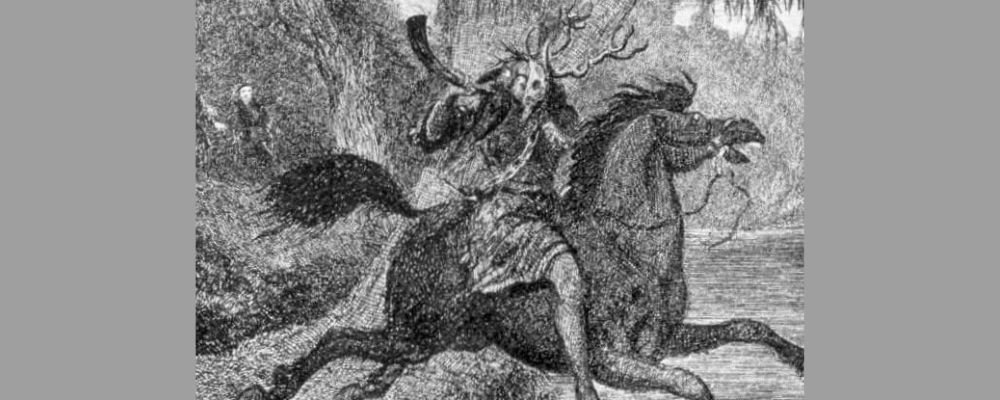
It is well established that a person of the manner ins which Christianity was able to convert Pagans and bring them into the Christian fold was to include essential Pagan practices into Christian rituals.
As a result, many of the vacations that exist in the Christian calendar have clear Pagan roots both in terms of the date on which they are significant and the routines used. Simply among others, Easter, Halloween, St John’s Eve, and Surprise all have strong pagan roots.
Christmas is no exception. At first integrated into an important Roman pagan holiday, when Christianity pertained to the Viking world, it soaked up many of the traditions conducted around the very same time of year as part of the Jul (or Yule) festival.

Pagan Christmas is celebrated in December to accompany the Pagan Roman vacations of Saturnalia and the celebration day of Sol Invictus. Saturnalia was a feastingperiod that began on the 17 th of December. Individuals would exchange gifts, generally statuettes of the gods to put on the family altar. This might be the root of the custom of the nativity scene. The festivities ended on the 25th of December, a couple of days after the Winter Solstice, when the days of the year finally start to get longer once again.
December 25th became connected with Jesus Christ since it was the festival day of Sol Invictus, who ended up being the most important god in the Roman pantheon in the 3rd century, not long prior to the empire converted to Christianity. The emperor Aurelianus dedicated Sol Invictus’ temple in Rome on the 25th of December in 274 AD. With the conversion to Christianity, this ended up being the primary banquet day of Jesus Christ.
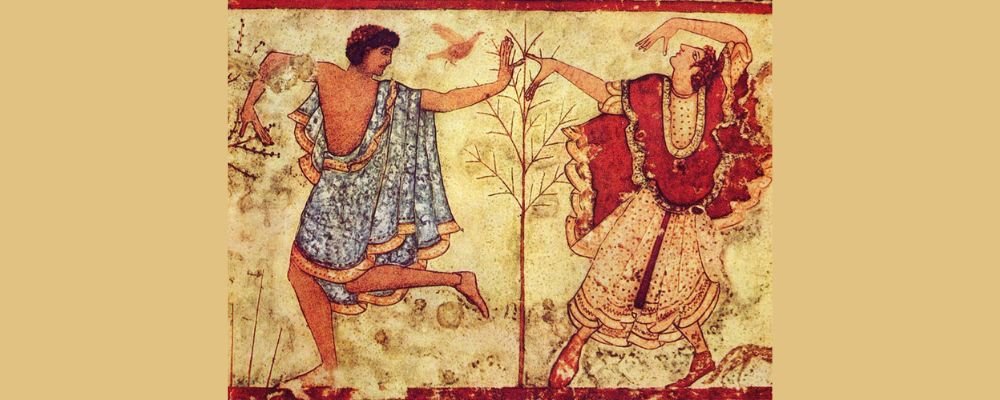
Christmas Comes to Norway Around 700 years after the dedication of the temple of Sol Invictus, Christianity pertained to the Vikings in Norway. According to the Saga of Hákon the Great, it was King Haakon I of Norway who altered the date of the standard Norse celebration of Yule to coincide with the 12-day Christian celebration of Christmas.
The Norwegian individuals were encouraged to celebrate the brand-new Christmas festival in place of Yule, but they did not just give up their Pagan traditions. These continued and ended up being included into new Christain traditions.
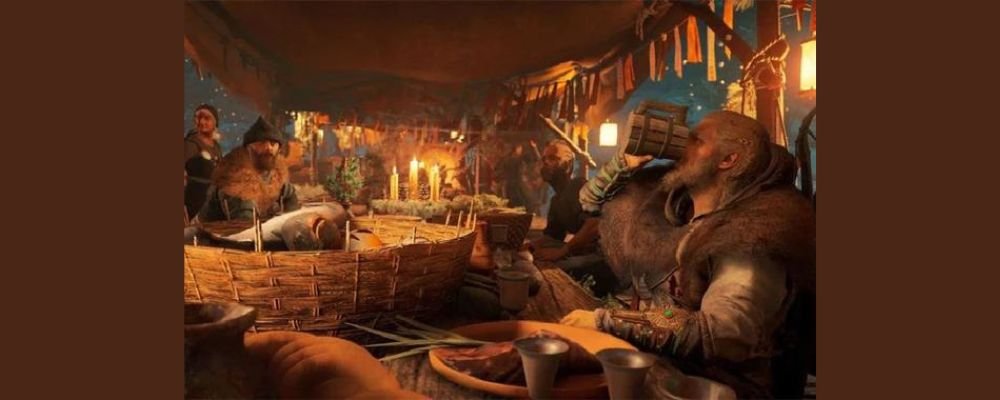
Viking Yule Folklore Viking Yule occurs at the darkest season, when the days are dark and short, specifically in northern countries like Norway. The Vikings believed that during this dark period, the veil in between the mortal and the supernatural worlds was really thin, and they were closer to the divine and the dead.
This was a time of year to watch out for draugr, the Viking undead. It was believed that the deceased could return to life and terrorize their neighborhoods if they wished. As killing livestock and setting fires, they could even go into someone’s dreams and kill them there.
If a neighborhood suspected that they were being scared by a draugr, they would dig up the recently deceased and search for evidence. If they believed that they had actually found one, they would do things like nail down their bodies, cut off their heads, or location a scythe over their neck so that they would behead themselves when they tried to increase.
However it was not only the dead who were at big during Yule, it was likewise the gods. In particular, Odin was thought to lead a divine Wild Hunt across the sky. Odin always gathered the souls of the bravest fallen dead to take to Valhalla. The Wild Hunt would gather other things that had actually passed away throughout the year, clearing the method for brand-new growth as the days began to get longer.
The Vikings would spend the duration of the Wild Hunt in their temples making sacrifices and in their long halls feasting so that they would not be captured outdoors and removed by the hunt by mishap.
However, when Odin was abroad, he might also choose to go to the deserving and deliver presents and excellent fortune.In in this manner, Odin served as a type of proto-Santa Claus. You can read our full blog site post on Odin as Santa Claus here.

Viking Yule Traditions A number of the Pagan routines and folk traditions practiced by the Vikings during Yule have actually found their method into Christmas customs, beginning in Norway and spreading to the remainder of the Christian world.
Religious rituals consisted of sacrifices. Animals were taken to the temples, sacrificed, and drained pipes of their blood. The meat was cooked for the days of feasting that happened over Yule, while the blood was smeared over the idols and walls of the temple. While it may be a bit revolting to imagine, this blood-smearing may be the origin of the concept of decking the halls.
The most standard Viking Yule food was a roast boar. This is probably related to the praise of Freyr during the festival because he and the other Vanir gods were closely related to the animal. Ham is still one of the most popular Christmas foods.
Drinking was an important part of the banquet, and lots of toasts were made. The first toast was made to Odin and then to Njord and Freyr, Vanir gods associated with fertility. Toasts were likewise made to the dead forefathers.
Thor, the god of thunder, was both a fertility and a protector god. He was also honored at Yule. Goats were frequently amongst the animals sacrificed, and goat figurines made from dried wheat were made and displayed as decorations. Viking Yule designs might have been placed on a yule tree, an evergreen tree brought into the home most likely to represent Yggdrasil, the world tree that sits at the center of the Norse universe. It is a symbol of life and may have represented the truth that life continued throughout the dark days of Yule.
The Vikings likewise chose a big oak log to burn in the fire throughout Yule. It was engraved with unique Norse runes that conjured up the gods’ protection against the darker supernatural forces for the period of Yule. The fire had to be kept lit throughout the whole celebration. Letting the fire head out was a very bad omen.
As part of joyful activities, the community would make a large wreath of dry natural product. Rather than hang this on a door, they would set this alight and roll it down a hill. This may have been a routine to beckon the return of the sun.
Mistletoe was hung, and mistletoe was an essential plant in Norse mythology. This is the only thing out there that can eliminate the god of light Balder. Loki discovers this trick and, in reality, utilizes the plant to eliminate the god and send him to the underworld. The connection in between the story and hanging mistletoe at Yule is unclear, but it may have represented honoring promises made to the gods.
Kids would leave their shoes by the fire at night and put out sugar and hay for Sleipnir, the eight-legged horse of Odin. These may have been put to get gifts if Odin chose to pass while on the wild hunt. There are some stories of member of the family dressing up as old male winter and bringing gifts. Reminiscent of Dad Christmas, in the oldest traditions, they were surely implied to be Odin.
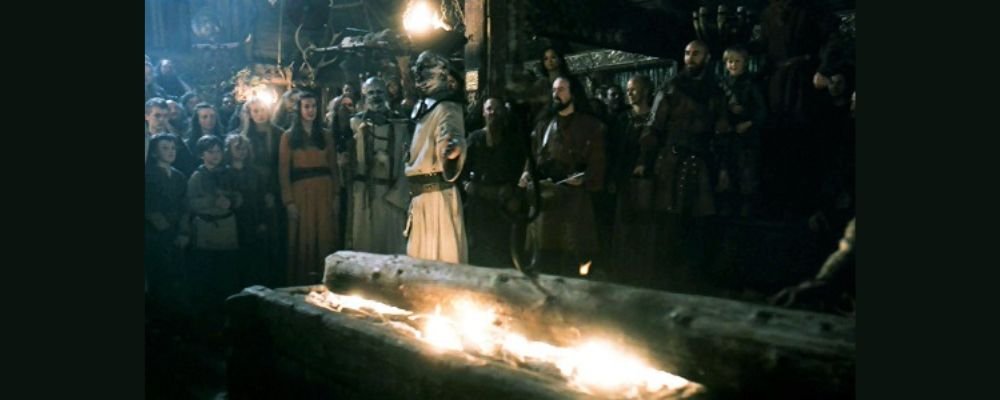
Heathen Christmas It is not tough to see lots of parallels in between standard Norse Yule traditions and modern Christmas customs. This is not surprising because we know that Christianity borrowed from lots of Pagan and folk traditions to much better adapt itself to new Christian converts.
What is striking is simply just how much impact Viking Yule appears to have had upon Christmas today, when Christianity borrowed from numerous Pagan traditions. This recommends that Yule was an extremely important vacation in the Norse world for their traditions to have actually overwhelmed others.
The post < Norse Christmas: Viking Yule Traditions< appeared initially on Norse and Viking Folklore.
Viking Yule decorations may have been put on a yule tree, an evergreen tree brought into the house probably to represent Yggdrasil, the world tree that sits at the center of the Norse universe. What is striking is simply how much influence Viking Yule seems to have had upon Christmas today, when Christianity borrowed from so lots of Pagan traditions. Viking Yule decorations may have been positioned on a yule tree, an evergreen tree brought into the house most likely to represent Yggdrasil, the world tree that sits at the center of the Norse universe. It is not difficult to see numerous parallels between conventional Norse Yule customs and modern-day Christmas customs. What is striking is just how much influence Viking Yule appears to have actually had upon Christmas today, when Christianity obtained from so lots of Pagan customs.

The Norwegian individuals were encouraged to celebrate the brand-new Christmas festival in place of Yule, but they did not just give up their Pagan traditions. These continued and ended up being included into new Christain traditions.

Viking Yule Folklore Viking Yule occurs at the darkest season, when the days are dark and short, specifically in northern countries like Norway. The Vikings believed that during this dark period, the veil in between the mortal and the supernatural worlds was really thin, and they were closer to the divine and the dead.
This was a time of year to watch out for draugr, the Viking undead. It was believed that the deceased could return to life and terrorize their neighborhoods if they wished. As killing livestock and setting fires, they could even go into someone’s dreams and kill them there.
If a neighborhood suspected that they were being scared by a draugr, they would dig up the recently deceased and search for evidence. If they believed that they had actually found one, they would do things like nail down their bodies, cut off their heads, or location a scythe over their neck so that they would behead themselves when they tried to increase.
However it was not only the dead who were at big during Yule, it was likewise the gods. In particular, Odin was thought to lead a divine Wild Hunt across the sky. Odin always gathered the souls of the bravest fallen dead to take to Valhalla. The Wild Hunt would gather other things that had actually passed away throughout the year, clearing the method for brand-new growth as the days began to get longer.
The Vikings would spend the duration of the Wild Hunt in their temples making sacrifices and in their long halls feasting so that they would not be captured outdoors and removed by the hunt by mishap.
However, when Odin was abroad, he might also choose to go to the deserving and deliver presents and excellent fortune.In in this manner, Odin served as a type of proto-Santa Claus. You can read our full blog site post on Odin as Santa Claus here.

Viking Yule Traditions A number of the Pagan routines and folk traditions practiced by the Vikings during Yule have actually found their method into Christmas customs, beginning in Norway and spreading to the remainder of the Christian world.
Religious rituals consisted of sacrifices. Animals were taken to the temples, sacrificed, and drained pipes of their blood. The meat was cooked for the days of feasting that happened over Yule, while the blood was smeared over the idols and walls of the temple. While it may be a bit revolting to imagine, this blood-smearing may be the origin of the concept of decking the halls.
The most standard Viking Yule food was a roast boar. This is probably related to the praise of Freyr during the festival because he and the other Vanir gods were closely related to the animal. Ham is still one of the most popular Christmas foods.
Drinking was an important part of the banquet, and lots of toasts were made. The first toast was made to Odin and then to Njord and Freyr, Vanir gods associated with fertility. Toasts were likewise made to the dead forefathers.
Thor, the god of thunder, was both a fertility and a protector god. He was also honored at Yule. Goats were frequently amongst the animals sacrificed, and goat figurines made from dried wheat were made and displayed as decorations. Viking Yule designs might have been placed on a yule tree, an evergreen tree brought into the home most likely to represent Yggdrasil, the world tree that sits at the center of the Norse universe. It is a symbol of life and may have represented the truth that life continued throughout the dark days of Yule.
The Vikings likewise chose a big oak log to burn in the fire throughout Yule. It was engraved with unique Norse runes that conjured up the gods’ protection against the darker supernatural forces for the period of Yule. The fire had to be kept lit throughout the whole celebration. Letting the fire head out was a very bad omen.
As part of joyful activities, the community would make a large wreath of dry natural product. Rather than hang this on a door, they would set this alight and roll it down a hill. This may have been a routine to beckon the return of the sun.
Mistletoe was hung, and mistletoe was an essential plant in Norse mythology. This is the only thing out there that can eliminate the god of light Balder. Loki discovers this trick and, in reality, utilizes the plant to eliminate the god and send him to the underworld. The connection in between the story and hanging mistletoe at Yule is unclear, but it may have represented honoring promises made to the gods.
Kids would leave their shoes by the fire at night and put out sugar and hay for Sleipnir, the eight-legged horse of Odin. These may have been put to get gifts if Odin chose to pass while on the wild hunt. There are some stories of member of the family dressing up as old male winter and bringing gifts. Reminiscent of Dad Christmas, in the oldest traditions, they were surely implied to be Odin.

Heathen Christmas It is not tough to see lots of parallels in between standard Norse Yule traditions and modern Christmas customs. This is not surprising because we know that Christianity borrowed from lots of Pagan and folk traditions to much better adapt itself to new Christian converts.
What is striking is simply just how much impact Viking Yule appears to have had upon Christmas today, when Christianity borrowed from numerous Pagan traditions. This recommends that Yule was an extremely important vacation in the Norse world for their traditions to have actually overwhelmed others.
The post < Norse Christmas: Viking Yule Traditions< appeared initially on Norse and Viking Folklore.
Viking Yule decorations may have been put on a yule tree, an evergreen tree brought into the house probably to represent Yggdrasil, the world tree that sits at the center of the Norse universe. What is striking is simply how much influence Viking Yule seems to have had upon Christmas today, when Christianity borrowed from so lots of Pagan traditions. Viking Yule decorations may have been positioned on a yule tree, an evergreen tree brought into the house most likely to represent Yggdrasil, the world tree that sits at the center of the Norse universe. It is not difficult to see numerous parallels between conventional Norse Yule customs and modern-day Christmas customs. What is striking is just how much influence Viking Yule appears to have actually had upon Christmas today, when Christianity obtained from so lots of Pagan customs.

Religious rituals consisted of sacrifices. Animals were taken to the temples, sacrificed, and drained pipes of their blood. The meat was cooked for the days of feasting that happened over Yule, while the blood was smeared over the idols and walls of the temple. While it may be a bit revolting to imagine, this blood-smearing may be the origin of the concept of decking the halls.
The most standard Viking Yule food was a roast boar. This is probably related to the praise of Freyr during the festival because he and the other Vanir gods were closely related to the animal. Ham is still one of the most popular Christmas foods.
Drinking was an important part of the banquet, and lots of toasts were made. The first toast was made to Odin and then to Njord and Freyr, Vanir gods associated with fertility. Toasts were likewise made to the dead forefathers.
Thor, the god of thunder, was both a fertility and a protector god. He was also honored at Yule. Goats were frequently amongst the animals sacrificed, and goat figurines made from dried wheat were made and displayed as decorations. Viking Yule designs might have been placed on a yule tree, an evergreen tree brought into the home most likely to represent Yggdrasil, the world tree that sits at the center of the Norse universe. It is a symbol of life and may have represented the truth that life continued throughout the dark days of Yule.
The Vikings likewise chose a big oak log to burn in the fire throughout Yule. It was engraved with unique Norse runes that conjured up the gods’ protection against the darker supernatural forces for the period of Yule. The fire had to be kept lit throughout the whole celebration. Letting the fire head out was a very bad omen.
As part of joyful activities, the community would make a large wreath of dry natural product. Rather than hang this on a door, they would set this alight and roll it down a hill. This may have been a routine to beckon the return of the sun.
Mistletoe was hung, and mistletoe was an essential plant in Norse mythology. This is the only thing out there that can eliminate the god of light Balder. Loki discovers this trick and, in reality, utilizes the plant to eliminate the god and send him to the underworld. The connection in between the story and hanging mistletoe at Yule is unclear, but it may have represented honoring promises made to the gods.
Kids would leave their shoes by the fire at night and put out sugar and hay for Sleipnir, the eight-legged horse of Odin. These may have been put to get gifts if Odin chose to pass while on the wild hunt. There are some stories of member of the family dressing up as old male winter and bringing gifts. Reminiscent of Dad Christmas, in the oldest traditions, they were surely implied to be Odin.

Heathen Christmas It is not tough to see lots of parallels in between standard Norse Yule traditions and modern Christmas customs. This is not surprising because we know that Christianity borrowed from lots of Pagan and folk traditions to much better adapt itself to new Christian converts.
What is striking is simply just how much impact Viking Yule appears to have had upon Christmas today, when Christianity borrowed from numerous Pagan traditions. This recommends that Yule was an extremely important vacation in the Norse world for their traditions to have actually overwhelmed others.
The post < Norse Christmas: Viking Yule Traditions< appeared initially on Norse and Viking Folklore.
Viking Yule decorations may have been put on a yule tree, an evergreen tree brought into the house probably to represent Yggdrasil, the world tree that sits at the center of the Norse universe. What is striking is simply how much influence Viking Yule seems to have had upon Christmas today, when Christianity borrowed from so lots of Pagan traditions. Viking Yule decorations may have been positioned on a yule tree, an evergreen tree brought into the house most likely to represent Yggdrasil, the world tree that sits at the center of the Norse universe. It is not difficult to see numerous parallels between conventional Norse Yule customs and modern-day Christmas customs. What is striking is just how much influence Viking Yule appears to have actually had upon Christmas today, when Christianity obtained from so lots of Pagan customs.
Viking History: Miklagard: When the Vikings Reached Constantinople
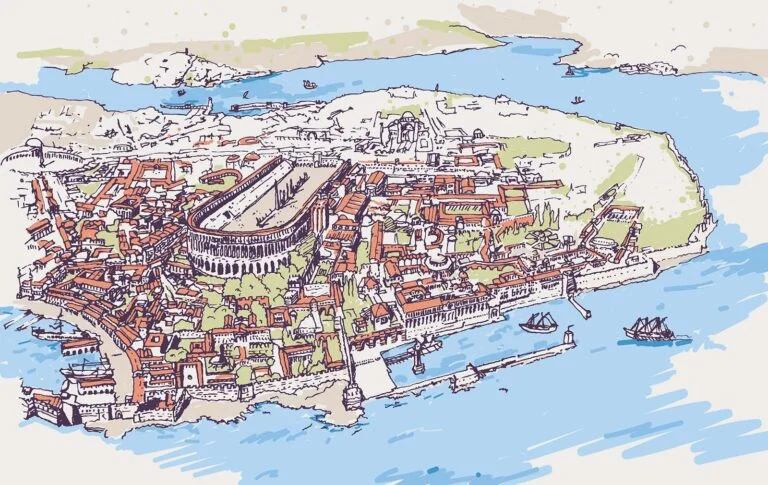
We have actually all become aware of the Vikings’attacks in what are today France, Britain and
Ireland. Did you know the Norsemen went as far as Constantinople, now Istanbul? What were they doing so far from their homeland? How do they arrive? And how do we even understand that they existed? Join us as we explore this remarkable overlap in between the
history of the Vikings and the residues of the Roman empire. It’s a tale of trade, piracy and war. The trading Vikings Our anglo-centric history books teach us that the Vikings were raiders, pertaining to”our”coasts to eliminate and pillage. While that remains in many cases precise, it stops brief of telling the entire story. In addition to raids, the Vikings were
also in the business of colonization, conquest and, many of all, trade. In the same way as routine people purchase items from far away nations today, so it was for
individuals in the middle ages period
. Jewellery, silver, silk, wine and spices were just a few of the products looked for by Viking traders. In exchange, they could offer wood
, iron, honey and fur from the North. The old town of modern Istanbul. Another non-negligible part of their trade remained in people: slaves that
they got either through trade, by raiding, or through their justice system– the main penalty for particular kinds of crimes was enslavement. Through trade and conquest came wealth
 , and the desire to go even more and
, and the desire to go even more and
discover a lot more riches. This is how the Vikings got to places like Spain and modern day Turkey. A network of rivers The look for brand-new riches through trade brought the Vikings even more and further from house, and led them to develop outposts in
modern day Poland, Latvia and Russia. Novgorod(Russia )is reported to be such an outpost, established by legendary Viking ruler Rurik. We know that certain types of Viking ships were completely capable of sailing on rivers. That being said, it is uncertain exactly what the vessels utilized by the Vikings to get to Constantinople looked like. By cruising upriver from the Baltic sea, portaging for a fairly short distance and cruising downriver to the Black Sea, the Vikings had reasonably
simple access to Constantinople. The truth that portage was involved tends to recommend that the vessels used were fairly little. The Viking outposts in contemporary Russia eventually resulted in a long-term presence. The Rus’people, which is what we call the Vikings who settled in this location, are extensively considered by scholars to have actually provided their name
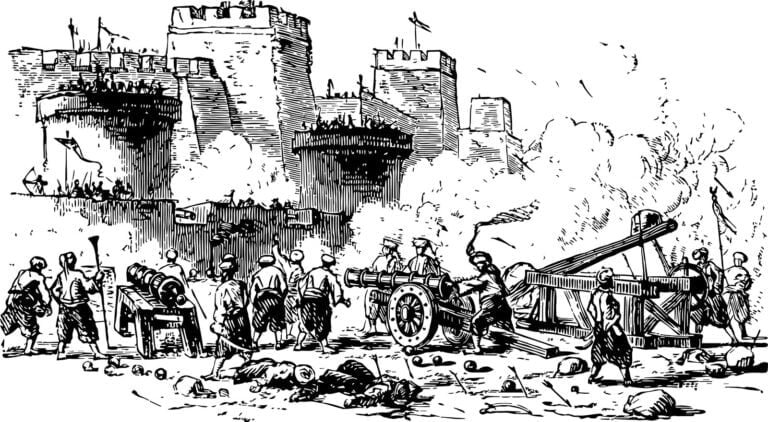
to contemporary Russia. This view is not entirely uncontroversial among Eastern European scholars. Miklagard: The Great City The Vikings plainly admired Constantinople, based on the name they chose for it: Miklagard, which indicates “Great City “. Surprisingly, the name survives to this day in Icelandic– Mikligarður– and Faroese– Miklagarður.
To Viking eyes, the capital of
the Byzantine empire was an awe-inspiring place, with its stunning architecture and the riches brought by its tactical position at the European end of the silk road. The relationship in between the 2 civilizations was not entirely friendly.
The Vikings laid siege to the city two times: initially in the year 860 and again in 907. By and large, the contact between the 2 was mutually useful. The furs, honey and servants traded by the
Vikings were in high demand in Constantinople– and the myriad of items available in the Great City was well worth the trip for the Vikings. Honey was amongst the items traded by the Vikings.
 The Vikings’s reputation as capable warriors eventually earned them a location of honour as the Byzantine emperor’s guard. The Varangians, as they were called by the Byzantine, remained in truth an uncommon present to the Byzantine emperor Basil II by Czar Vladimir (Valdemar)of Russia, in 980. The 6,000 Scandinavian-Russian Vikings were integrated into the
The Vikings’s reputation as capable warriors eventually earned them a location of honour as the Byzantine emperor’s guard. The Varangians, as they were called by the Byzantine, remained in truth an uncommon present to the Byzantine emperor Basil II by Czar Vladimir (Valdemar)of Russia, in 980. The 6,000 Scandinavian-Russian Vikings were integrated into the
emperor’s army as a single unit, and were the best-paid troops in the empire. Well-paid in fact, that in order to join this choose group of soldiers,
one had to bribe the ideal people. The Varangian guard served Byzantium for 300 years. Proof of the Vikings in Constantinople There is sufficient evidence of Viking existence in Constantinople. Here is a summary of a few of the most engaging
evidence. Archaeology Archeological remains showing that the Vikings were present along the path to the Black sea have actually been discovered in Latvia, Russia and
Poland. Big hoards of dirhams have been discovered in Sweden. These silver coins minted in North Africa and Central Asia were treasured by the Vikings utilized for sell Eastern Europe (including Constantinople). More recently, archaeologists found the remains of a Viking area in the ancient city of Bathonea near Lake Küçükçekmece, in Istanbul. Some of the runic graffiti in a gallery of the Hagia Sophia in Istanbul. Photo: Hermann Junghans(CC/Wikipedia )Runes In Istanbul, there is runic graffiti in a gallery of the Hagia Sophia. They are primarily illegible today, however on one of them, one can construct”ftan “: the 2nd part of the name
“Halfdan”.
Completion is primarily difficult to check out however it is presumed that it follows the formula “so and so carved these runes “. To put it simply, “Halfdan was here “. Tourists have actually not altered quite through the ages
it appears. A large number of Viking runestones have actually likewise been found, mainly in Sweden, commemorating the exploits of the Varangian guard. Surprisingly, a few of these runestones consist of the Byzantine cross
, an indisputable link to the eastern city. A few of Sweden’s runestones contain references to the Byzantine Empire.
